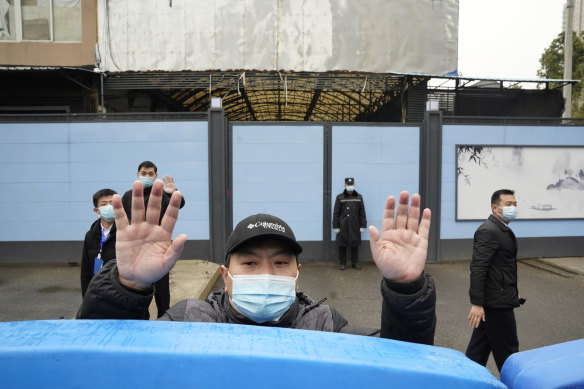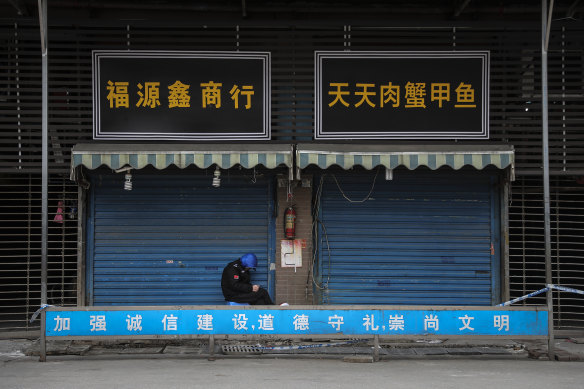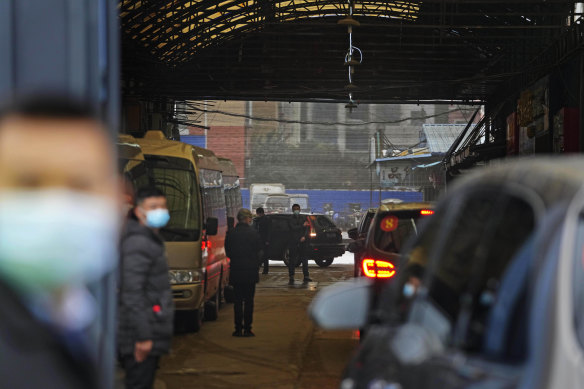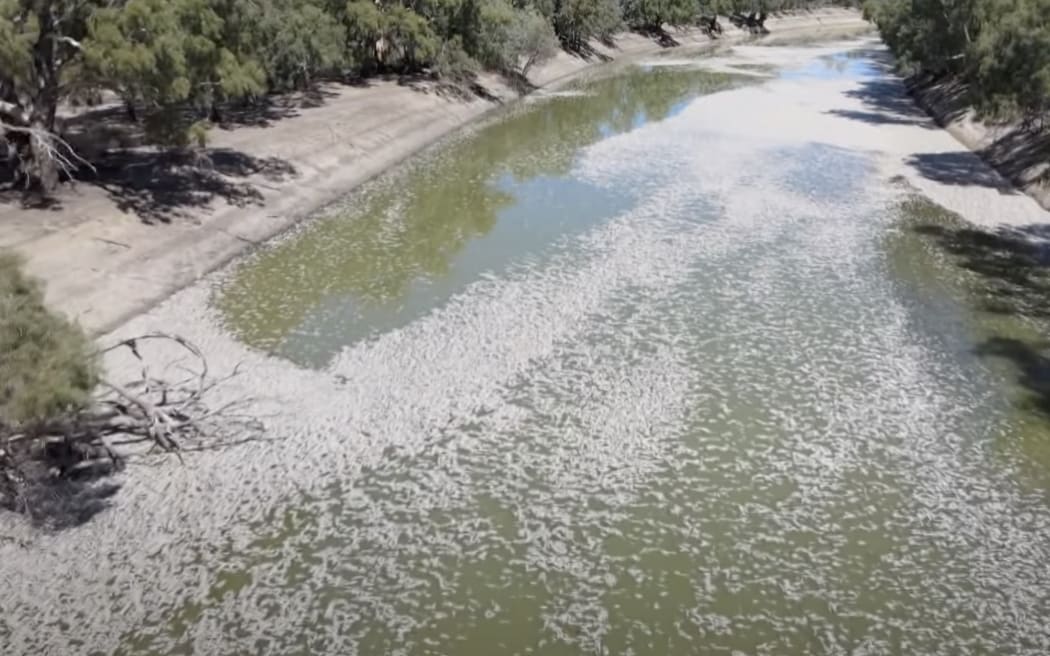China took down data on potential insight into origins of Covid-19, says WHO
China should have shared the data three years ago when the pandemic had begun in 2020, the global health body said.
The World Health Organization said on Friday that China took down data related to a research that might have provided more insight into the origins of the Covid-19 virus.
“Last Sunday, WHO was made aware of data published on the GISAID [Global Initiative on Sharing Avian Influenza Data] database in late January, and taken down again recently,” Director-General of the World Health Organization Tedros Adhanom Ghebreyesus said. “The data, from the Chinese Center for Disease Control and Prevention, relates to samples taken at the Huanan market in Wuhan, in 2020.”
He added that scientists from a number of countries downloaded the data and analysed it while it was still online.
“As soon as we became aware of this data, we contacted the Chinese CDC [Centre for Disease Control] and urged them to share it with WHO and the international scientific community so it can be analysed,” Ghebreyesus said.
The World Health Organization said that China should have shared the data three years ago when the pandemic had begun in 2020. “Understanding how the pandemic began remains both a moral and scientific imperative,” WHO said.
The global health body also said that Covid-19 could soon transition to a point where it is similar to flu.
“I think we’re coming to that point where we can look at Covid-19 in the same way we look at seasonal influenza, a threat to health, a virus that will continue to kill, but a virus that is not disrupting our society or disrupting our hospital system” WHO said.
Meanwhile, India has reported an increase in the number of Covid-19 cases this week along with other infleunza cases. On Saturday, India recorded more than 800 cases of coronavirus in a single day for the first time after 126 days. The number of active cases of Covid-19 in the country rose to 5,389 on Saturday.
On Thursday, the Centre had asked Tamil Nadu, Telangana, Kerala, Karnataka, Maharashtra and Gujarat – states which have been recording most of the new cases – to ramp up testing, monitor new clusters and send samples of international travellers, reported The Indian Express.
WHO accuses China of hiding data that may link COVID’s origins to animals
By Benjamin Mueller
Updated March 18, 2023 —
The World Health Organisation rebuked Chinese officials for withholding research that may link COVID-19’s origin to wild animals, asking why the data had not been made available three years ago and why it is now missing.
Before the Chinese data disappeared, an international team of virus experts downloaded and began analysing the research, which appeared online in January. They say it supports the idea that the pandemic could have begun when illegally traded raccoon dogs infected humans at a Wuhan seafood market.

A security guard waves for journalists to clear the road after a convoy carrying the World Health Organisation team entered the Huanan Seafood Market in January 2021.CREDIT:AP
But the gene sequences were removed from a scientific database once the experts offered to collaborate on the analysis with their Chinese counterparts.
“These data could have — and should have — been shared three years ago,” WHO Director-General Tedros Adhanom Ghebreyesus said. The missing evidence now “needs to be shared with the international community immediately.”
According to the experts who are reviewing it, the research offers evidence that raccoon dogs — foxlike animals known to spread coronaviruses — had left behind DNA in the same place in the Wuhan market that genetic signatures of the new coronavirus also were discovered.
To some experts, that finding suggests that the animals may have been infected and may have transmitted the virus to humans.

A security guard sits outside the closed Huanan Seafood Wholesale Market, CREDIT:GETTY
With huge amounts of genetic information drawn from swabs of animal cages, carts and other surfaces at the Wuhan market in early 2020, the genetic data had been the focus of restless anticipation among virus experts since they learned of it a year ago in a paper by Chinese scientists.
A French biologist discovered the genetic sequences in the database last week, and she and a team of colleagues began mining them for clues about the origins of the pandemic.
That team has not yet released a paper outlining the findings. But the researchers delivered an analysis of the material to a WHO advisory group studying COVID’s origins this week in a meeting that also included a presentation by Chinese researchers regarding the same data.
RELATED ARTICLE

Coronavirus pandemic
New data links COVID’s origins to raccoon dogs at Wuhan market
The analysis seemed to clash with earlier contentions by Chinese scientists that samples taken in the market that were positive for the coronavirus had been ferried in by sick people alone, said Sarah Cobey, an epidemiologist and evolutionary biologist at the University of Chicago who was not involved in recent research.
“It’s just very unlikely to be seeing this much animal DNA, especially raccoon dog DNA, mixed in with viral samples, if it’s simply mostly human contamination,” Cobey said.
Questions remain about how the samples were collected, what precisely they contained and why the evidence had disappeared. In light of the ambiguities, many scientists reacted cautiously, saying that it was difficult to assess the research without seeing a complete report.
The idea that a lab accident could have accidentally set off the pandemic has become the focus of renewed interest in recent weeks, thanks in part to a fresh intelligence assessment from the Department of Energy and hearings held by the new Republican House leadership.
But a number of virus experts not involved with the latest analysis said that what was known about the swabs gathered in the market buttressed the case that animals sold there had sparked the pandemic.

A convoy of vehicles carrying the World Health Organisation team enters the interior of the Huanan Seafood Market in January 2021.CREDIT:AP
“It’s exactly what you’d expect if the virus was emerging from an intermediate or multiple intermediate hosts in the market,” Cobey said. “I think ecologically, this is close to a closed case.”
Cobey was one of 18 scientists who signed an influential letter in the journal Science in May 2021 urging serious consideration of a scenario in which the virus could have spilled out of a laboratory in Wuhan.
On Friday, she said lab leaks continued to pose enormous risks and that more oversight of research into dangerous pathogens was needed. But Cobey added that an accumulation of evidence — relating to the clustering of human cases around the Wuhan market, the genetic diversity of viruses there and now the raccoon dog data — strengthened the case for a market origin.
The new genetic data does not appear to prove that a raccoon dog was infected with the coronavirus. Even if it had been, the possibility would remain that another animal could have passed that virus to people, or even that someone infected with the virus could have transmitted it to a raccoon dog.
Some scientists stressed those points Friday, saying that the new genetic data did not appreciably shift the discussion about the pandemic’s origins.
“We know it’s a promiscuous virus that infects a bunch of species,” said David Fisman, an epidemiologist at the University of Toronto, who also signed the May 2021 letter in Science.
Chinese scientists had released a study in February 2022 looking at the market samples. Some scientists speculated that the Chinese researchers might have posted the data in January because they were required to make them available as part of a review of their study by a scientific journal.
The Chinese study had suggested that samples that were positive for the virus had come from infected people, rather than from animals sold in the market. That fit with a narrative long promulgated by Chinese officials: that the virus sprang not only from outside the market but from outside the country altogether.

Raccoon dogs are related to foxes and are known to be able to transmit the coronavirus.
“Scientifically, it doesn’t prove that raccoon dogs were the source, but it sure smells like infected raccoon dogs were at the market,” said Jeremy Kamil, a virologist at Louisiana State University Health Sciences Centre Shreveport.
He added: “It raises more questions about what the Chinese government really knows.”
Scientists cautioned that it was not clear that the genetic material from the virus and from raccoon dogs had been deposited at the same time.
Depending on the stability of genetic material from the virus and the animals, said Michael Imperiale, a virologist at the University of Michigan, “they could have been deposited there at potentially widely different times.”
Still, Dr Arturo Casadevall, an immunologist at the Johns Hopkins Bloomberg School of Public Health who co-authored a recent study with Imperiale examining the origin of the coronavirus, said that linking animal and viral material nevertheless added to the evidence of a natural spillover event.
“I would say it strengthens the zoonotic idea,” he said, “that is, the idea that it came from an animal at the market.”
In the absence of the actual animal that first spread the virus to people, Casadevall said, assessing the origins of an outbreak would always involve weighing probabilities. In this case, animals sold at the market were removed before researchers began taking samples in early 2020, making it impossible to find a culprit.
Tim Stearns, dean of graduate and postgraduate studies at the Rockefeller University in New York, said the latest finding was “an interesting piece of the puzzle,” although he said it was “not in itself definitive and highlights the need for a more thorough investigation.”
For all the missing elements, some scientists said the new findings highlighted just how much information scientists had managed to assemble about the beginnings of the pandemic, including home addresses for early patients and sequence data from the market.
Theodora Hatziioannou, a virologist at the Rockefeller University, said it was critical that the raw data be released. But, she said, “I think the evidence is overwhelming at the moment toward a market origin.”
And the latest data, she said, “makes it even more unlikely that this started somewhere else.”
Felicia Goodrum, an immunobiologist at the University of Arizona, said that finding the virus in an actual animal would be the strongest evidence of a market origin. But finding virus and animal material in the same swab was close.
“To me,” she said, “this is the next best thing.”
This article originally appeared in The New York Times.







